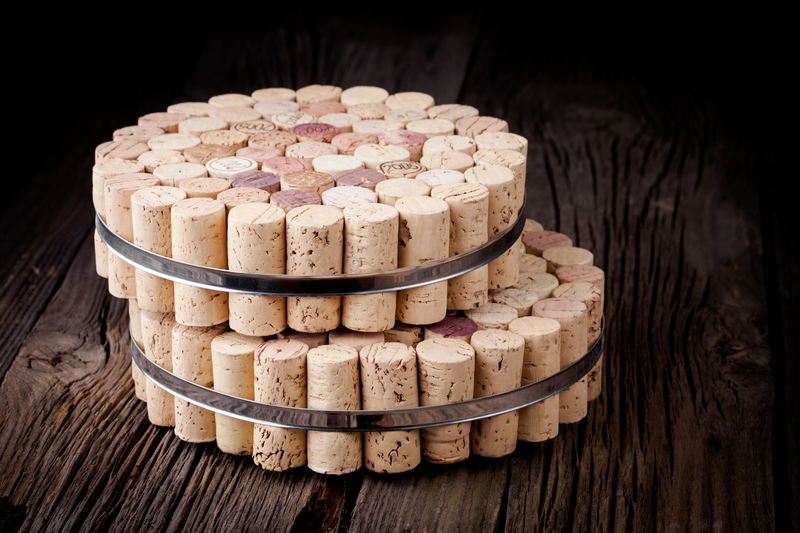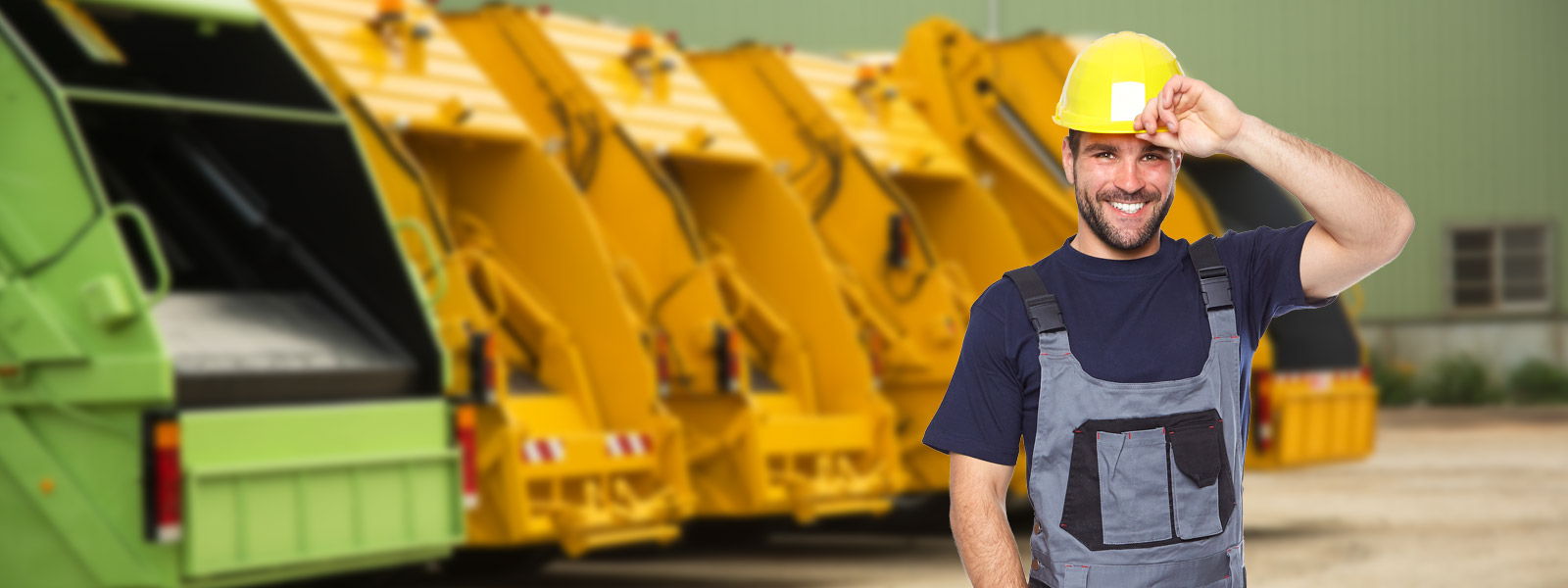Unlocking the Secrets of Sustainable Pot Disposal
Posted on 05/11/2025
Unlocking the Secrets of Sustainable Pot Disposal
In a world increasingly focused on environmental consciousness, sustainable pot disposal has become more than just a gardening afterthought. Whether you're an avid gardener, a plant enthusiast, or involved in the commercial horticulture industry, knowing how to dispose of unwanted plant pots sustainably is crucial. With millions of pots ending up in landfills yearly, uncovering the secrets of sustainable and eco-friendly pot disposal helps reduce waste, conserve resources, and promote a greener planet.
Why Sustainable Pot Disposal Matters
Every year, countless plastic, ceramic, and terracotta pots are discarded after serving their purpose. The impact is significant:
- Plastic pots can take centuries to decompose, leaching chemicals into the environment.
- Ceramic and terracotta pots consume vast amounts of energy during production and are often difficult to recycle.
- Improper disposal contributes to overflowing landfills and pollution.
Sustainable plant pot disposal is an eco-responsible solution that addresses the lifecycle of pots, from production to end-of-life management. By making eco-friendly choices, we help conserve natural resources and protect ecosystems.

The Lifecycle of Plant Pots: From Cradle to Grave
To unlock the secrets of sustainable disposal of plant containers, it's essential first to understand their lifespan:
- Production: Most pots are made from plastic, clay, or biodegradable materials. Each material has unique environmental impacts and post-use considerations.
- Usage: Pots are used for transplanting, growing, or decorative purposes for months or years.
- End of Life: Often, pots are broken, damaged, or simply no longer needed. That's when sustainable pot disposal techniques come in.
Types of Pots and Sustainable Disposal Solutions
1. Plastic Pots
Plastic pots are the most ubiquitous and challenging to dispose of sustainably. They are durable, lightweight, and inexpensive, but not always recyclable through regular curbside programs.
Eco-Friendly Disposal Tips:
- Check Local Recycling Guidelines: Many municipalities don't accept garden plastics due to their composition. Look for special recycling logos on your pots and find local recycling centers that accept them.
- Reuse and Repurpose: Before discarding, consider reusing plastic pots for seed starting, storage, or plant swaps. Educational facilities and community gardens may also have a use for them.
- Pot Recycling Programs: Major retailers and nurseries sometimes host specialized pot recycling events. Collect your old pots and drop them off for responsible recycling.
- Upcycling: Get creative! Plastic pots can become craft projects, organizers, or even parts of irrigation systems.
2. Terracotta and Clay Pots
Terracotta and clay pots have a natural aesthetic but are prone to cracking and breaking. Unlike their plastic counterparts, they're non-toxic and break down into soil-friendly components over time but aren't always curbside recyclable.
Sustainable Solutions:
- Repair: Minor chips or cracks can often be fixed with food-safe adhesives. Extend the life of your clay pots with some simple repairs.
- Creative Repurposing: Broken clay pieces make excellent drainage in the bottom of other pots or garden beds.
- Composting: Although terracotta isn't true compost, crushed pieces can help aerate compost piles and garden soil without adding toxins.
- Eco-friendly Disposal: In small quantities, clay and terracotta break down naturally and can be buried in the garden to improve soil structure.
3. Biodegradable Pots
Biodegradable pots, often made from peat, coconut coir, wood fiber, or paper, are gaining popularity due to their minimal environmental impact.
Disposal Methods:
- Direct Planting: Many eco-friendly pots are designed to be planted directly in the ground with the plant. They break down naturally, adding nutrients to the soil.
- Home Composting: Compost fiber, paper, or coir pots in your home composter or green waste bin.
- Municipal Green Waste Collection: Check if your local authorities accept biodegradable pots in their green waste stream.
Best Practices for Sustainable Plant Pot Disposal
1. Clean Pots Thoroughly Before Disposal
2. Avoid Single-Use Plastics
3. Support Pot Take-Back Programs
4. Educate Your Community
Innovative Alternatives: Rethinking the Pot Paradigm
Modern innovation is unlocking new secrets to sustainable pot disposal by designing out waste entirely. Consider these alternatives for your next planting project:
- Living Pots: Options like coconut shell, cow dung, or compressed rice hulls create pots that feed the soil as they decompose.
- Pots from Agricultural Waste: Companies now craft planters from agricultural byproducts, using husks and stalks that decompose harmlessly in garden beds.
- Deposit Return Schemes: Buy pots with a small deposit that's refunded when you return the pot for recycling or reuse.
- Edible Pots: Some manufacturers are exploring edible and seed-infused pots for ultimate zero waste gardening.
The Role of Manufacturers and Retailers in Eco-friendly Pot Disposal
While consumers play a vital part, manufacturers and retailers also have a responsibility to encourage sustainable plant pot recycling:
- Use of Recycled Materials: Companies should utilize recycled or easily recyclable materials for pot production.
- Clear Labeling: Easy-to-read recycling symbols and disposal instructions help consumers make the right choices.
- Take-Back Initiatives: Expanding collection and recycling programs encourages customers to return used pots instead of throwing them away.
- Innovative Design: Design pots for durability, reusability, and eventual eco-friendly breakdown.
Composting and Pot Disposal: What Works and What Doesn't
Many gardeners wonder if they can compost old pots. The answer depends on the material:
- Compstable: Fiber-based, paper, coir, and some wooden pots are fully home compostable.
- Non-Compstable: Plastic, ceramic, or pots with chemical coatings do not belong in compost piles.
- Pro Tip: Always break down biodegradable pots into smaller pieces to speed up their decomposition process.
DIY Upcycling Ideas: Giving Old Pots New Life
Unlock your creativity! Eco-conscious pot disposal can be fun and rewarding with these upcycling ideas:
- Decorative Garden Borders: Bury broken terracotta pieces to create rustic path edges or mosaic effects.
- Vertical Gardens: Attach old plastic pots to wooden panels for a striking vertical plant wall.
- Storage Solutions: Use larger pots for organizing gardening tools, kids' toys, or craft supplies.
- Craft Projects: Paint and decorate pots for seasonal displays, birdhouses, or lanterns.
- Mini Planters: Small pots are perfect for succulents or starting herbs on windowsills.
Disposal Checklist: Are You Disposing Responsibly?
When it's finally time to say goodbye to a plant pot, ensure you're using a sustainable method:
- Clean all organic residue before recycling or donating.
- Find specialized programs or centers for plastics and ceramics.
- Repurpose or upcycle when possible before considering disposal.
- Compost only pots made of natural biodegradable materials.
- Never burn plastic or chemically treated pots due to toxic emissions.
Final Thoughts: The Future of Sustainable Pot Disposal
Unlocking the secrets of sustainable pot disposal isn't about finding one perfect solution, but making thoughtful choices at every step. As new materials and programs emerge, gardeners and growers have an opportunity to lead by example in eco-friendly practices. By choosing recyclable pots, reusing whenever possible, and opting for biodegradable options, your gardening hobby can become a model of sustainability.
Next time you pot up a new plant or tackle last season's empty flower pots, remember: your decision is more than just trash or treasure. Embrace eco-friendly pot disposal and help sow the seeds of a cleaner, greener world--one pot at a time.
Make sustainable pot disposal a cornerstone of your gardening routine, and share these secrets with your friends and community: together, we can cultivate a thriving earth for generations to come.

Frequently Asked Questions: Sustainable Pot Disposal
-
What should I do with cracked or broken plant pots?
Broken pots can be used as drainage shards in new pots, added to garden beds for aeration, or used creatively in landscaping and craft projects. Never put broken ceramics or glass into curbside recycling--seek specialized facilities if recycling is available. -
Where can I recycle plastic plant pots?
Check with local nurseries, garden centers, or municipal recycling events. Many curbside programs do not accept garden plastics--always verify with your local waste authority. -
Are biodegradable pots safe for the environment?
Yes! If made from natural materials like fiber, wood, or coir, they enrich soil and reduce dependency on plastics. -
Can I donate unused pots?
Absolutely. Donate clean, usable pots to schools, community gardens, plant swaps, and local charities--they'll appreciate the support! -
What's the best sustainable alternative to traditional plant pots?
Biodegradable, home-compostable pots or repurposed containers are excellent options for eco-friendly gardeners.
Share the Secret: Be a Steward of Your Soil and Our Planet
By making informed, eco-responsible choices around sustainable pot disposal, you set a powerful example. Whether in your backyard or community, your approach to garden waste matters. Let's work together to uncover, share, and implement the best strategies for a sustainable, beautiful world!
 House clearance
House clearance Rubbish collection
Rubbish collection








 020 3744 6462
020 3744 6462 020 3744 6462
020 3744 6462


